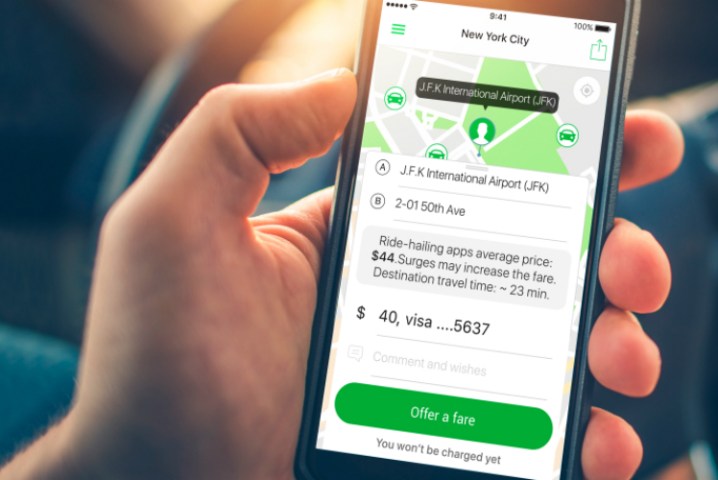
Most rideshare companies start in the U.S. and add other countries later. International rideshare company inDriver isn’t like most companies. It launched in New York City on Tuesday, December 4, the app already has 14 existing million members in 160 cities across 11 nations, and lets passengers determine fares.
With inDriver’s Real-Time Deals (RTD), passengers set their destination and route and state what they are willing to pay. The inDriver app sends the passenger’s destination and fare to drivers in the area. Drivers are never required to take offered fares just because they are logged into the inDriver system as active.
Drivers who receive notice of passenger offers have three choices: Accept the offered fare, ignore the offer, or bargain for a higher fare. Counteroffers must align with rates pre-approved by the area inDriver base of operations.
Passengers who receive one or more acceptances or counteroffers from drivers in the area can choose which offer to accept. Passengers can choose based on fare amount, driver ratings, estimated time of arrival, and the vehicle make and model.
In New York City, inDriver intends to enhance ridesharing access in the outer boroughs, where residents often face high rideshare charges due to surge fares from other companies. At the company’s launch, inDriver offers service to passengers in Brooklyn, Queens, the Bronx, and Staten Island, which inDriver refers to as “underserved transportation deserts.” Passengers in Manhattan will be able to send inDriver trip request offers for longer rides.
New drivers for inDriver pay zero commission for six months, after which the company commission rate will range from five to eight percent, which inDriver says is significantly less than other New York City rideshare companies. According to the company, more than 5,000 drivers in the NYC area have signed up with inDriver.
“inDriver has thrived across the globe by advocating for the rights of both drivers and passengers in cities that are often overlooked by giant ride-hailing corporations,” inDriver CEO Arsen Tomsky said in a statement. “This is exactly why NYC is the perfect location for our U.S. debut. New Yorkers continue to be squeezed every day, whether it is outer borough passengers being priced out of rides, or drivers being forced to work long hours without being able to make ends meet.”



